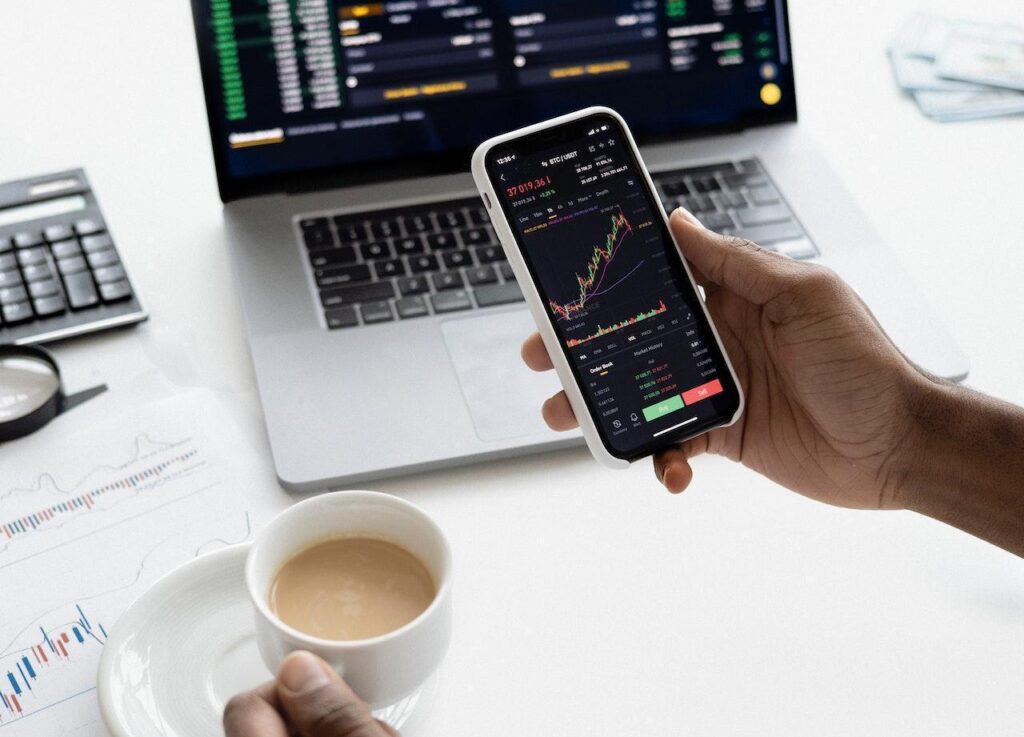How to do premarket trading? Those will get benefits who take decisions in a timely. First come first served…. Do you agree? The same may happen in premarketing.
What is the meaning of premarketing?
Premarket trading refers to the buying and selling of securities on a stock exchange before the regular market hours, typically from 4:00 a.m. to 9:30 a.m. Eastern Time. It provides an opportunity for investors and traders to buy or sell securities before the start of the regular market session. And, is often seen as a barometer for upcoming market activity. However, it should be noted that the activity it can be thin and less liquid. This leads to greater volatility and wider bid-ask spreads.

What time is required in premarket trading?
It typically takes place before regular stock market hours. The exact time varies by the stock exchange and brokerage firm, but it generally occurs between 4:00 a.m. and 9:30 a.m. Eastern Time.
Who Can Participate in the Enigma of Premarket Trading?
It is not accessible to all. It is only to those who possess the knowledge and fortitude to navigate its complexities. This pre-hours buying and selling session of securities is reserved for those who dare to delve into the unpredictable nature of the market. It may embrace the risks associated with early market access.
The eligibility to participate is determined by individual brokerage firms. And, may vary based on account status and other criteria. Typically, individuals with margin accounts, professional traders, and institutional investors are among those who may be authorized to participate.

What are the Benefits of premarketing?
The pre-hours buying and selling of securities offer a multitude of benefits to those who dare to traverse its complexities. Those who embark on the mystical journey of premarket trading are privy to a variety of advantages, including early insights into market sentiment and trends, increased liquidity, unparalleled flexibility, and profit potential. So the benefits may include the:
1. Glimpsing the Unseen:
Premarket trading allows traders to peer into the veiled world of market activity and receive a glimpse into the early indicators of market sentiment, trends, and investment opportunities. This can grant traders a competitive edge in navigating the tumultuous waters of the stock market.
2. The Elusive Stability of Liquidity:
Regular market hours can be plagued by large orders or sudden news events that can trigger rapid price fluctuations, causing instability in the market. It offers an increased level of liquidity, reducing the chances of drastic price swings and providing a more stable platform for traders.
3. The Flexibility of Time and Space:
It provides traders with the flexibility to respond quickly to market events, news releases, or other information that may impact their investments. This is particularly beneficial for traders who operate in diverse time zones or lead busy lives.
4. The Potential for Enigmatic Wealth:
As with any form of trading, premarket trading presents the possibility for profit. By engaging in the pre-hours buying and selling of securities, traders may have the opportunity to capitalize on market trends and opportunities before they become widely known.
Why is Premarket Trading Important?
This can prove to be a critical barometer of market sentiment, providing valuable and rare insights into the market. For instance, an unexpected surge in its activity in a particular stock may indicate that investors are confident in the future of the company, resulting in higher prices during regular market hours. Moreover, it can offer a competitive advantage to those with the astuteness to make informed investment decisions based on early market trends.
Risks of Premarket Trading
The Perils of Venturing into the Mysterious World of Premarket Trading. As with any form of investment, It carries inherent risks that traders must be aware of before entering its shadowy depths. Those who dare to traverse the mysterious realm of pre-hours buying and selling of securities must be prepared to face the following risks
1. Reduced Liquidity:
The limited number of participants in it can result in reduced liquidity, making it more difficult to execute trades and causing wider bid-ask spreads. This can lead to increased volatility and potentially more extensive losses.
2. Heightened Volatility:
The absence of normal market forces, such as institutional investors and large trading volumes, can lead to increased volatility of it. Prices can swing rapidly in response to news events or other market activity, leading to unexpected losses for traders.
3. Incomplete Information:
Pre-hours trading can occur before key market data, such as company earnings reports or economic indicators, are released. This can lead to a lack of complete information, causing uncertainty and potentially leading to incorrect trading decisions.
4. Technical Glitches:
Technical glitches, such as system failures or errors in trading platforms, can occur more frequently during premarket trading hours when volumes are lower. This can cause unexpected delays or failures in executing trades, leading to potential losses.
So it presents a world of opportunity and potential profits but also carries significant risks that traders must be aware of. Those who choose to enter this mysterious realm must be prepared to navigate its complexities and carefully consider their investment goals and risk tolerance before embarking on the journey.
What kind of Securities Can Be Traded in the Pre-Market?
the premarket session provides traders with access to a universe of investment opportunities, including stocks, ETFs, and futures. However, it is important to remember that not all securities are eligible for trade during this mystical time frame, and traders must carefully consider their investment goals and risk tolerance before embarking on any premarket trading endeavors.
Is it possible that online brokers to participate in premarketing?
The Enigma Surrounding the Presence of Online Brokers in the Pre-Market Trading Domain
The realm of pre-hours securities transactions has increasingly been accessible through the portals of online brokers in recent years, enabling traders to embark on this enigmatic pursuit from the comfort of their abodes. Nevertheless, the selection of a suitable online broker is a crucial step, requiring a discerning evaluation of several factors.
1. Accessibility:
It is imperative to confirm if the chosen online broker provides entry into the pre-market domain, as not all brokers offer this service. Additionally, restrictions on the hours of operation in the pre-market world may exist, and it is crucial to be cognizant of such limitations.
2. Trading Platforms:
Most online brokers furnish their traders with platforms that permit participation in pre-market dealings. The disparity in functionality and user experience among these platforms necessitates a comparison between the offerings of various brokers to determine the best fit for individual needs.
3. Commission and Fees:
The presence of fees for pre-market trading is a factor that requires examination, and its impact on investment returns must be determined. Furthermore, higher commissions for pre-market trades may be levied by certain brokers, and a comparison of commission structures among brokers is crucial to identify the optimal option for investment goals.
In summary, online brokers have paved the way for traders to delve into the enigma of pre-market trading, but a cautious and thorough evaluation of the factors discussed is crucial in choosing a broker that satisfies individual requirements and provides the optimal platforms and services.
The comparison of Premarket vs. After Hours marketing.
The Conundrum of Comparing Premarket and After-Hours Trading: A Dilemma for Investors
Investors are often faced with the conundrum of choosing between premarket and after-hours trading, as both offer distinct advantages and disadvantages. Let us delve into the labyrinthine complexities of these two realms to gain a better understanding of their unique characteristics:
1. Timing:
This typically occurs before the official stock market opening, while after-hours trading takes place after the market closes. The availability of liquidity and trading volume can vary significantly between these two sessions, and investors need to consider these factors when making investment decisions.
2. Market Impact:
The impact of news and economic events on the stock market can be greater during the premarket and after-hours trading, as these sessions are typically characterized by lower trading volumes and liquidity. This can result in heightened volatility and larger price swings, making these sessions more suited to experienced traders who are comfortable with taking on higher levels of risk.
3. Accessibility:
Access to premarket and after-hours trading is often limited to accredited investors and institutional traders, and the availability of these sessions may vary depending on the broker and the security being traded. Investors need to confirm their eligibility to participate in these sessions and to familiarize themselves with the restrictions that may apply.
In conclusion, the choice between premarket and after-hours trading is a complex one, and investors must weigh the benefits and risks associated with each session in light of their investment goals and risk tolerance. Both premarket and after-hours trading offers unique opportunities and challenges, and investors need to approach these sessions with a well-informed and strategic mindset.
Premarket Trading Tips
Premarket trading can offer investors a wealth of opportunities, but it also presents its own set of unique challenges. Here are some tips for it:
1. Monitor News and Economic Data Releases:
Premarket trading is often influenced by news and economic data releases, and it is essential for investors to monitor these events and assess their impact on the stock market. Keeping abreast of important news and data releases can provide valuable insights into market sentiment and help investors make informed investment decisions.
2. Assess Liquidity and Trading Volume:
Liquidity and trading volume can be lower during premarket trading, and investors need to assess these factors when making investment decisions. Low liquidity can result in wider bid-ask spreads, making it more difficult to execute trades at desired prices, while low trading volume can result in heightened volatility and larger price swings.
3. Be Prepared for Increased Volatility:
Premarket trading is often characterized by increased volatility and larger price swings, making it more suited to experienced traders who are comfortable with taking on higher levels of risk. Investors should be prepared for heightened volatility and should approach premarket trading with a well-informed and strategic mindset.
4. Confirm Eligibility and Restrictions:
Access to premarket trading is often limited to accredited investors and institutional traders, and the availability of premarket trading may vary depending on the broker and the security being traded. Investors need to confirm their eligibility to participate in premarket trading and familiarize themselves with any restrictions that may apply.
So, premarket trading can offer investors a wealth of opportunities, but it also presents its own set of unique challenges. By following these tips, investors can approach premarket trading with confidence and navigate the labyrinthine realm with aplomb.
What are the Challenges in premarket Trading?
Premarket trading is an alluring, yet complex and intricate arena for investors, and several challenges must be navigated to reap its rewards. Here are some of the most perplexing challenges of premarket trading:
1. Limited Liquidity:
This often experiences limited liquidity, which can result in wider bid-ask spreads and make it more difficult to execute trades at desired prices. This lack of liquidity can also result in increased volatility, and investors must be prepared for larger price swings and heightened volatility.
2. News and Economic Data Releases:
The stock market is often influenced by news and economic data releases, and premarket trading can be particularly sensitive to these events. It is essential for investors to monitor these releases and assess their impact on the stock market to make informed investment decisions.
3. Lower Trading Volume:
The lower trading volume during premarket trading can result in heightened volatility and larger price swings, making it more suited to experienced traders who are comfortable with taking on higher levels of risk. Investors should be prepared for this increased volatility and approach to it with a well-informed and strategic mindset.
4. Restrictions on Participation:
Access to premarket trading is often restricted to accredited investors and institutional traders, and the availability of it may vary depending on the broker and the security being traded. Investors need to confirm their eligibility to participate in it and familiarize themselves with any restrictions that may apply.
In conclusion, premarket trading presents a labyrinthine array of challenges for investors, and investors need to navigate these challenges with care and consideration. By monitoring news and economic data releases, assessing liquidity and trading volume, and preparing for increased volatility, investors can approach it with confidence and reap its rewards.
Taking care if you participate in Premarket Trading.
Premarket trading presents both opportunities and challenges for investors, and the decision of whether to participate in premarket trading is a complex one that must be considered with care. Here are some factors to consider when deciding whether to participate in premarket trading:
1. Investment Goals:
The first consideration for investors is whether premarket trading aligns with their investment goals. Investors who are focused on long-term investment strategies may find that premarket trading is not well-suited to their investment goals, while more active traders may find premarket trading to be an attractive opportunity.
2. Risk Tolerance:
Premarket trading is often characterized by higher levels of risk, including limited liquidity, heightened volatility, and larger price swings. Investors must assess their risk tolerance and determine whether they are comfortable with these increased risks.
3. Market Knowledge:
Investors who participate in premarket trading must be knowledgeable about the market and the securities they are trading, as well as familiar with the tools and strategies they will use. This includes monitoring news and economic data releases and assessing their impact on the stock market.
4. Access and Availability:
Access to premarket trading is often restricted to accredited investors and institutional traders, and the availability of premarket trading may vary depending on the broker and the security being traded. Investors must confirm their eligibility to participate in premarket trading and familiarize themselves with any restrictions that may apply.
The decision of whether to participate in premarket trading is a complex and perplexing one that requires careful consideration of investment goals, risk tolerance, market knowledge, and access and availability. Investors who are comfortable with the increased risks of premarket trading and have the knowledge and skills to navigate its challenges may find it to be a valuable opportunity, while others may prefer to focus on other investment strategies.
The Conundrum of Premarket Trading: A Synthesis of Pros and Cons
It has emerged as a captivating arena for investors who seek to capitalize on early market developments and price movements. Premarket trading provides the opportunity for investors to access information and market indicators before the official opening of the stock market. This can result in a more informed trading strategy and the potential for profits.
On the other hand, premarket trading is not without its perils. The limited liquidity, heightened volatility, and lack of regulatory oversight can amplify the risks associated with trading and lead to significant losses. Moreover, the lack of transparency in premarket trading can make it difficult for investors to obtain accurate and up-to-date information, further exacerbating the risks.
Conclusion
In conclusion, the decision of whether to participate in premarket trading is a complex and intricate one that must be approached with caution. Investors must consider their investment goals, risk tolerance, market knowledge, and access and availability before determining whether premarket trading is an appropriate investment strategy for them. Those who are well-informed and capable of navigating the challenges and uncertainties of premarket trading may reap its rewards, while others may prefer to focus on other investment opportunities.
——————————————————————————————————————–
Find here some very useful products related to pets
How To Train Your Puppy, Cat training, Dog health exposed, Best training techniques, Curb Your Cat
Useful Business Links: If you want to get money and improve your business, get valuable information from the following links.
Forex Starlight, Fibo Quantum, Forex Product, Forex Heartbeat, Crypto Quantum Leap, Project Serenity, Exynox Scalper, Forex Product
_____________________________________________________________________________________________________________
If you are health conscious, then you must check out the following amazing products
The ultimate keto plan, Negative Ions Sticker-protect your family, Smart Blood Sugar, The Essential Keto cook book, Lean Belly, Doctor’s Book of Survival Home Remedies, Custom Keto Diet, The Back Pain SOS, Cleaner Smile Teeth, The Lose Your First 10 Lbs, Nutrition Guide, Meal Planner










